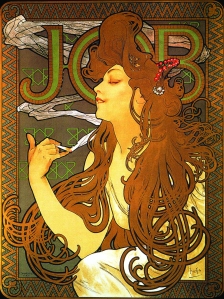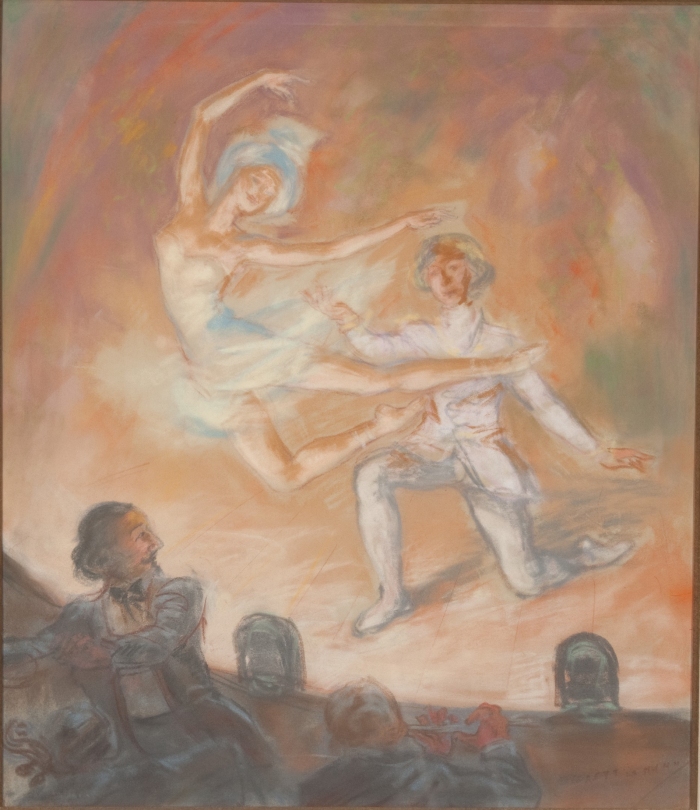Text by Michael Rugh, Gallery Attendant, Forsyth Galleries
“The mystery of the seven stars which thou sawest in my right hand, and the seven golden candlesticks. The seven stars are the angels of the seven churches” (Revelation 1:20).
In 1885, Louis Comfort Tiffany created the renowned Tiffany Studios which went on to produce exquisite decorative glass that captivated connoisseurs and laymen alike. The seven stained glass windows which are now traveling under the exhibit name “In Company With Angels” were originally part of a small Swedenborgian Christian Church in Cincinnati. When the church was leveled in 1964 to make way for highway expansion, the windows were removed and eventually stored in a barn in Pennsylvania.
Ten years later, Rev. Susannah Currie discovered the windows and established an organization to maintain and restore the works of art. A generous donation of $50,000 from Ms. Helene Tripier helped begin this process. In 2007, “In Company With Angels” began traveling across the country. To witness a portion of the restoration process, continue to the YouTube link below:
https://www.youtube.com/watch?v=CDtc_NMp3GA
The seven windows depict the seven angels of seven churches referenced in Revelation 2-3. Each of the seven churches must overcome tribulations to receive a gift. The gifts listed in Revelation are clearly depicted in the glass. The following are in the order in which they appear in Revelation.
“To him that overcometh will I give to eat of the tree of life, which is in the midst of the paradise of God” (Rev 2:7). The first window shows the angel of the church of Ephesus. A lively branch is held delicately by an angelic hand. The first section of Revelation 2 praises the people of Ephesus for their hard work and their avoidance of evil. However, they are asked to remember the reason that man first fell and repent for forgetting. They are rewarded with the tree of life for completing this.
A bright royal crown rests on the hand of the angel of the church of Smyrna. The people of Smyrna are promised to be rewarded if they remain faithful until death.
A brilliant white stone stands out strikingly in the hand of the angel of Pergamos. In this section of Revelation, the people or Pergamos are warned to repent of their sins and to avoid following the teachings of a different doctrine which is causing them to commit sins against God.
In the fourth window, the angel of Thyatira holds a star which could be said to represent “intelligence and wisdom given by the Lord”. The people of Thyatira are asked to reject a false prophetess who is luring them into sin.
“He that overcometh, the same shall be clothed in white raiment; and I will not blot out his name out of the book of life, but I will confess his name before my Father, and before His angels” (Rev 3:5). As the passage suggests, the angel of Sardis is clothed in a garment of bright white glass. This section of Revelation warns the people of Sardis to work to triumph over spiritual death by being watchful and to remember His words.
The pillar that stands by the angel of Philadelphia represents the promise that, by keeping God’s word, one can become part of the everlasting temple. In this section of Revelation, God promises to protect the people of Philadelphia who are not strong enough to protect themselves but have kept His word.
A scepter rests in the hand of the angel of Laodicea, representing the sovereignty of God that can be shared with those who overcome sin. The people of Laodicea are urged to be diligent in keeping the Lord in their hearts and on their minds and avoid being blinded by luxury and a life of earthly goods.
When you look at the angels, notice the delicate thought that went into making each gift stand out. Some Tiffany windows were made with up to 7 layers (Tiffany also called them plates) to create a deeper color. These particular windows use up to 4 layers to create the various effects. Notice how the clothing made of glass seems to bend and fold like real fabric. Consider the coloration of the wings as they stand vibrantly against the light.
Don’t miss your chance to experience these discovered jewels of Tiffany Studios. “In Company of Angels” will be coming to the Forsyth Galleries May 30th and will close October 12th.
For more information about this exhibition, visit: http://www.incompanywithangels.org/
 Text by Taylor Cone, Gallery Attendant
Text by Taylor Cone, Gallery Attendant


